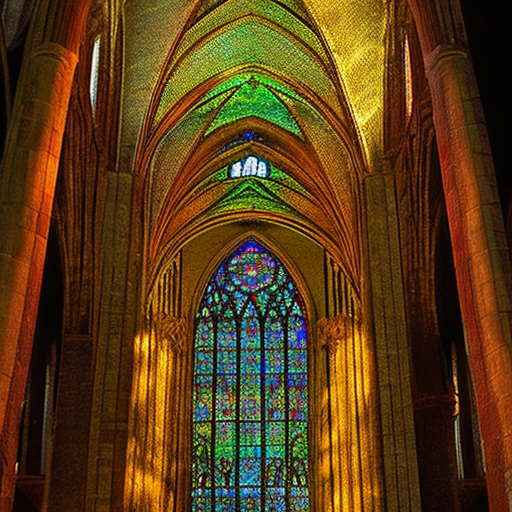Summary: Stained glass is a form of art that involves the use of colored glass to create intricate designs and images. It has a long history, dating back to ancient times, and has been used in various religious and secular contexts. Stained glass windows are particularly famous for their beauty and ability to transform light, often found in churches and cathedrals. The process of creating stained glass involves cutting, shaping, and assembling pieces of glass, which are then joined together using lead or other materials. Today, stained glass continues to be a popular art form, with artists exploring new techniques and styles to create stunning works of art.
History of Stained Glass:
Stained glass has a rich history that can be traced back to ancient Egypt and Rome. The technique of coloring glass was perfected by the Romans, who used it to create decorative vessels and mosaics. However, it was during the medieval period that stained glass truly flourished, with the development of the Gothic architectural style. Stained glass windows became an integral part of Gothic cathedrals, depicting biblical scenes and saints. The use of stained glass in religious buildings continued throughout the Renaissance and Baroque periods, with artists like Michelangelo and Bernini incorporating it into their designs.
The Process of Creating Stained Glass:
Creating stained glass involves several steps. The first step is to design the pattern or image that will be depicted in the glass. Once the design is finalized, the glass is selected and cut into the desired shapes. The pieces are then shaped and smoothed using grinding tools. After the glass pieces are ready, they are painted with various colors and fired in a kiln to permanently fuse the paint to the glass. The painted pieces are then assembled using lead came, a type of metal strip, or copper foil. The joints are soldered together to create a strong and durable structure. Finally, the stained glass panel is cleaned and polished to enhance its appearance.
Styles and Techniques:
Stained glass has evolved over the centuries, with artists experimenting with different styles and techniques. Some of the most famous styles include the Gothic, Renaissance, and Art Nouveau. Gothic stained glass is characterized by its intricate designs and use of vibrant colors. Renaissance stained glass, on the other hand, is more realistic and often depicts biblical scenes. Art Nouveau stained glass is known for its flowing lines and organic forms. In addition to these traditional styles, contemporary artists have also embraced new techniques, such as fused glass and glass painting, to create unique and innovative works of art.
Significance and Impact:
Stained glass has had a significant impact on art and culture throughout history. In religious contexts, stained glass windows served as a way to educate and inspire worshipers, as well as to create a sense of awe and reverence. The use of light and color in stained glass can evoke powerful emotions and create a spiritual atmosphere. In secular contexts, stained glass has been used in various architectural and decorative applications, adding beauty and elegance to buildings. Today, stained glass continues to be appreciated for its aesthetic value and craftsmanship, with many artists and craftsmen dedicated to preserving and advancing this ancient art form.
In conclusion, stained glass is a captivating art form that has been cherished for centuries. Its intricate designs, vibrant colors, and ability to transform light make it a unique and mesmerizing medium. From its origins in ancient times to its continued popularity today, stained glass has left an indelible mark on art and culture. Whether found in religious buildings or contemporary art installations, stained glass continues to inspire and captivate audiences around the world.












